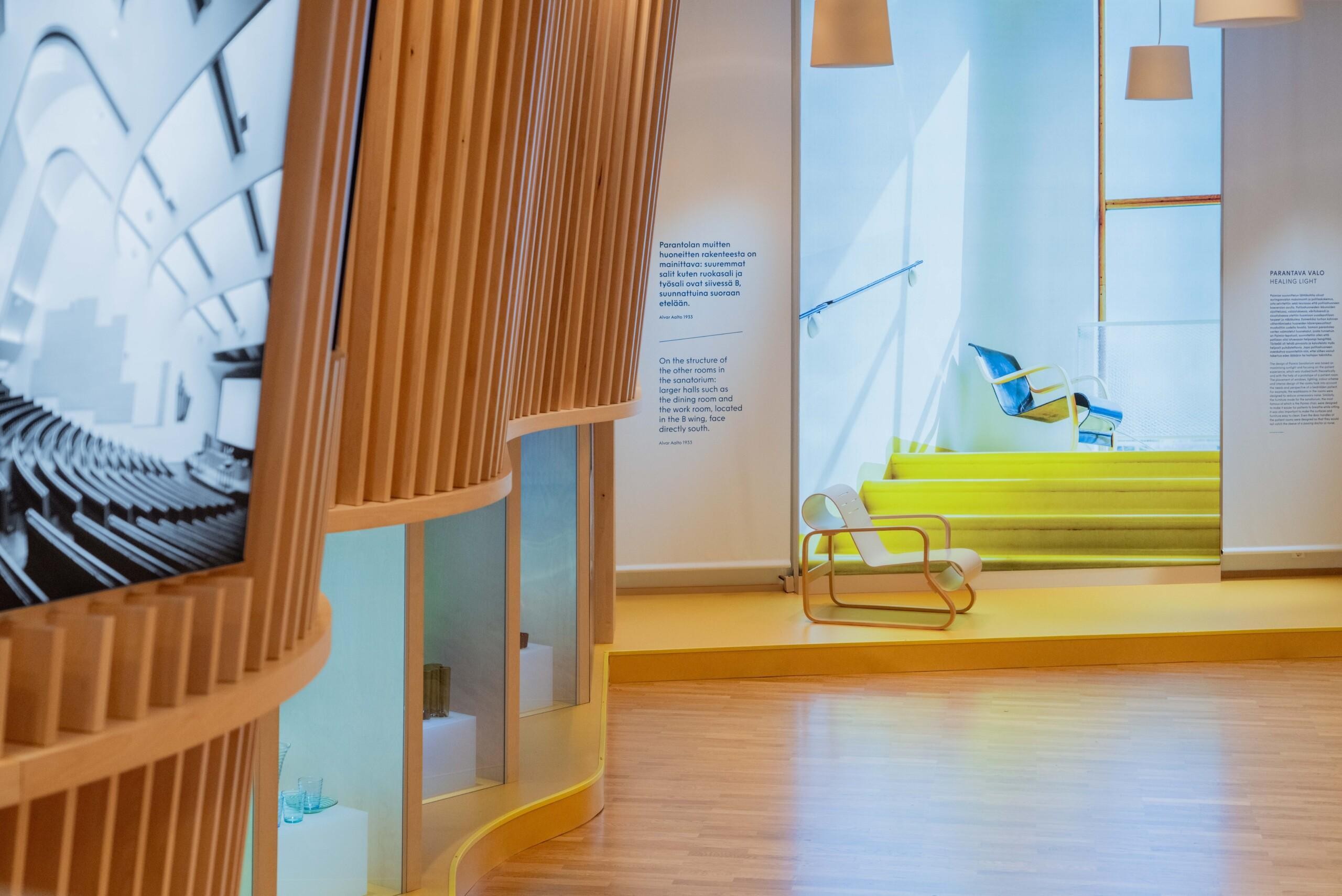
Finlandia Hall’s permanent exhibition takes visitors on an inspiring journey to the sources of creativity of Alvar, Aino, and Elissa Aalto, as well as to the essence of Finnishness. The narrative-driven exhibition tells an unprecedented story about creativity, Finnish identity, and humanity through the lives and works of the Aaltos, significant events in Finnish history, and the relationship with Finnish nature and forests. The overall experience will provide new perspectives on the Aaltos’ achievements and their impact on Finnish architecture, design, and international networks.
The Finlandia Exhibition brings the Aalto legacy to life as a multi-sensory experience, where light, nature, purpose, and human relationships come together. Spaces that previously served as rehearsal rooms for symphony orchestras now invite you to experience their harmony. Sit down to admire and immerse yourself in the stories that intertwine with the creation of the Finlandia Hall and the building of Finnish identity along the way. The exhibition invites you to sense, linger, and participate.
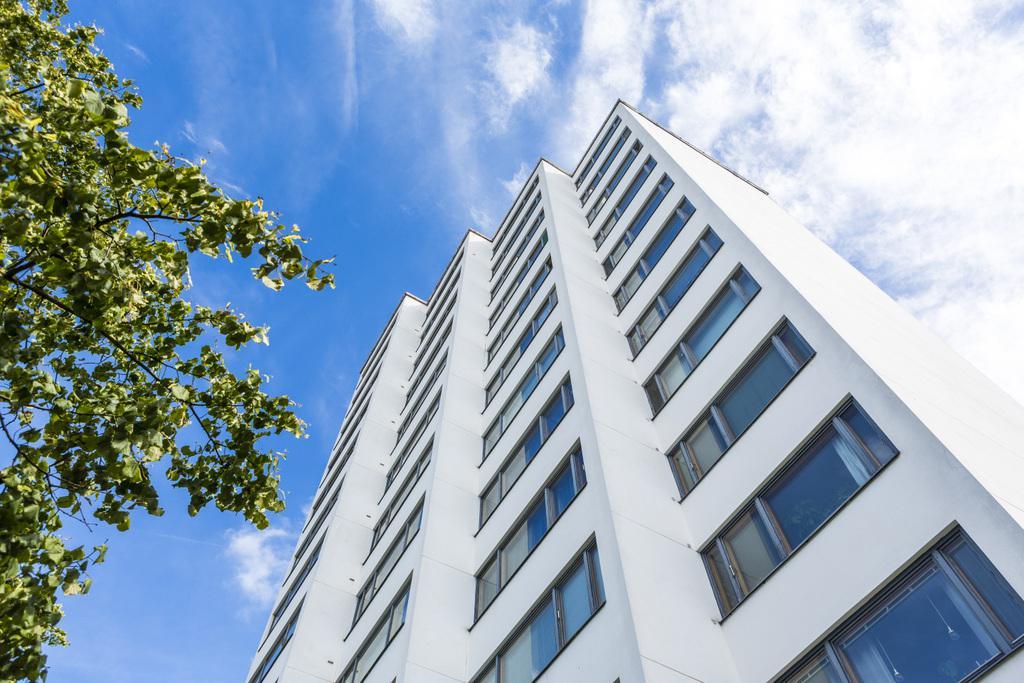
Duration: 2 hours
Length: 6,8 km
In total, there are nearly 30 buildings designed by Alvar Aalto in the Jyväskylä region – ranging from his earliest work to designs made during his final stages. These include both private properties and public buildings, such as the Jyväskylä City Theatre, the University campus and AaltoAlvari Aquatic Centre. Alvar Aalto bicycle tour lets you see the center of Jyväskylä, while showing off the architecture of Alvar Aalto in different city districts.
Currently, Jyväskylä is known as a city of sports, and the region offers varied bicycle and hiking trails for people of all skill levels. What better way to see the works of the renowned architect than a bicycle tour? The beautiful lake landscape colors the hilly terrain, and the region offers a number of bicycle and hiking trails popular among the locals.
Our Alvar Aalto bicycle tour lets you see the center of Jyväskylä, while showing off the architecture of Alvar Aalto in different city districts. The bicycle tour starts at the Aalto2 -museum center (number 1 on the map), continuing to the center of Jyväskylä and towards the lake landscapes of Taulumäki and Viitaniemi. The tour then returns to the city center, visiting the University of Jyväskylä, one of the most architecturally interesting campus areas in Finland.
Route description
- Aalto2 Museum Centre
Alvar Aallon katu 7, 40600 Jyväskylä
- Casa Laurén 1925–1928
Vapaudenkatu 12, 40100 Jyväskylä
- Jyväskylä Administrative and Cultural centre 1964–1982
Vapaudenkatu-Kilpisenkatu-Hannikaisenkatu-Gummeruksenkatu, 40100 Jyväskylä
- Defence Corps Building 1926–1929
Kilpisenkatu 8, 40100 Jyväskylä
- Nikolainkulma
Vapaudenkatu 53, 40100 Jyväskylä
- Workers’ Club 1924–1925
Väinönkatu 7, 40100 Jyväskylä (At the intersection of Väinönkatu and Kauppakatu)
- Renovation of Nuora House 1923–1924
Hongikontie 9, 40200 Jyväskylä
- Viitatorni 1957–1962
Viitaniementie 16, 40720 Jyväskylä
- Aira House 1924–1926
Tapionkatu 2, 40100 Jyväskylä
- Jyväskylä University Seminaarinmäki Campus 1951–1971
Seminaarinkatu 15, 40100 Jyväskylä
- Villa Karpio 1923
Lehtisenkuja 1, 40600 Jyväskylä
Route on Google Maps
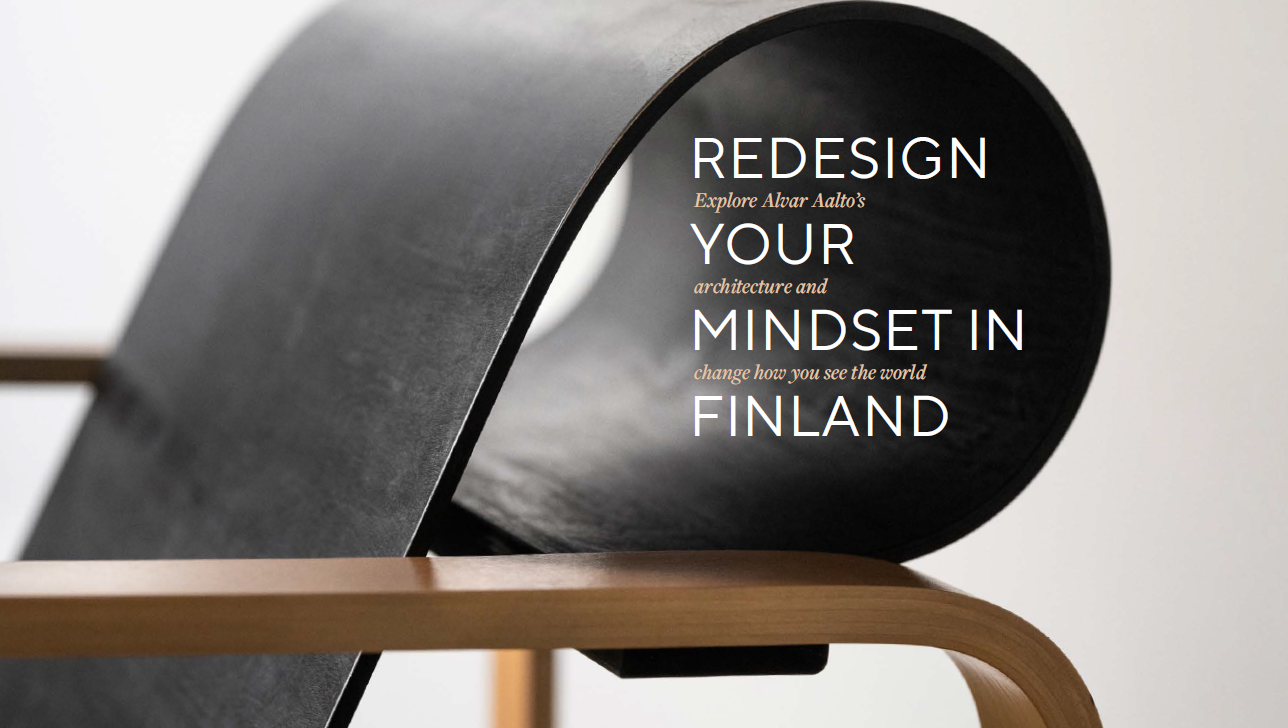
Welcome to the Alvar Aalto Route – a journey where the magic of architecture and design comes alive, inviting you to see the world through a redesigned lens. Alvar Aalto (1898–1976), the visionary of modern architecture, shaped spaces with a profoundly human approach. His creations are more than buildings; they are experiences that resonate with the soul. Scattered across Finland and beyond, they serve as gateways to a reimagined world.
In 2021, this extraordinary route was honoured with the prestigious certification as a Cultural Route of the Council of Europe, affirming its role in the rich tapestry of European heritage. The Alvar Aalto Route offers more than a journey through architectural masterpieces—it extends a warm invitation to immerse yourself in a space where design, nature, and the human spirit converge in harmony.
This catalogue is your guide to a curated collection of Aalto experiences. Each package is a thoughtfully designed adventure into Alvar Aalto’s world, seamlessly blending his iconic architecture with the unique flavours of local life. From serene Finnish landscapes to vibrant European Aalto destinations, these journeys offer something for everyone. Whether you’re a first-time visitor or a devoted admirer of Aalto’s work, we warmly welcome you—and continually seek new partners to enrich the experience.
Step into spaces that defy the ordinary, where every curve, every material, and every detail tells a story that redefines how you perceive the world around you. This is the essence of the Alvar Aalto Route: an invitation to rediscover beauty, functionality, and the interconnectedness of life through the lens of one of modern architecture’s greatest minds.
Let us help you navigate this adventure and uncover how Aalto’s vision can transform not just physical spaces but also the way you view the world itself.
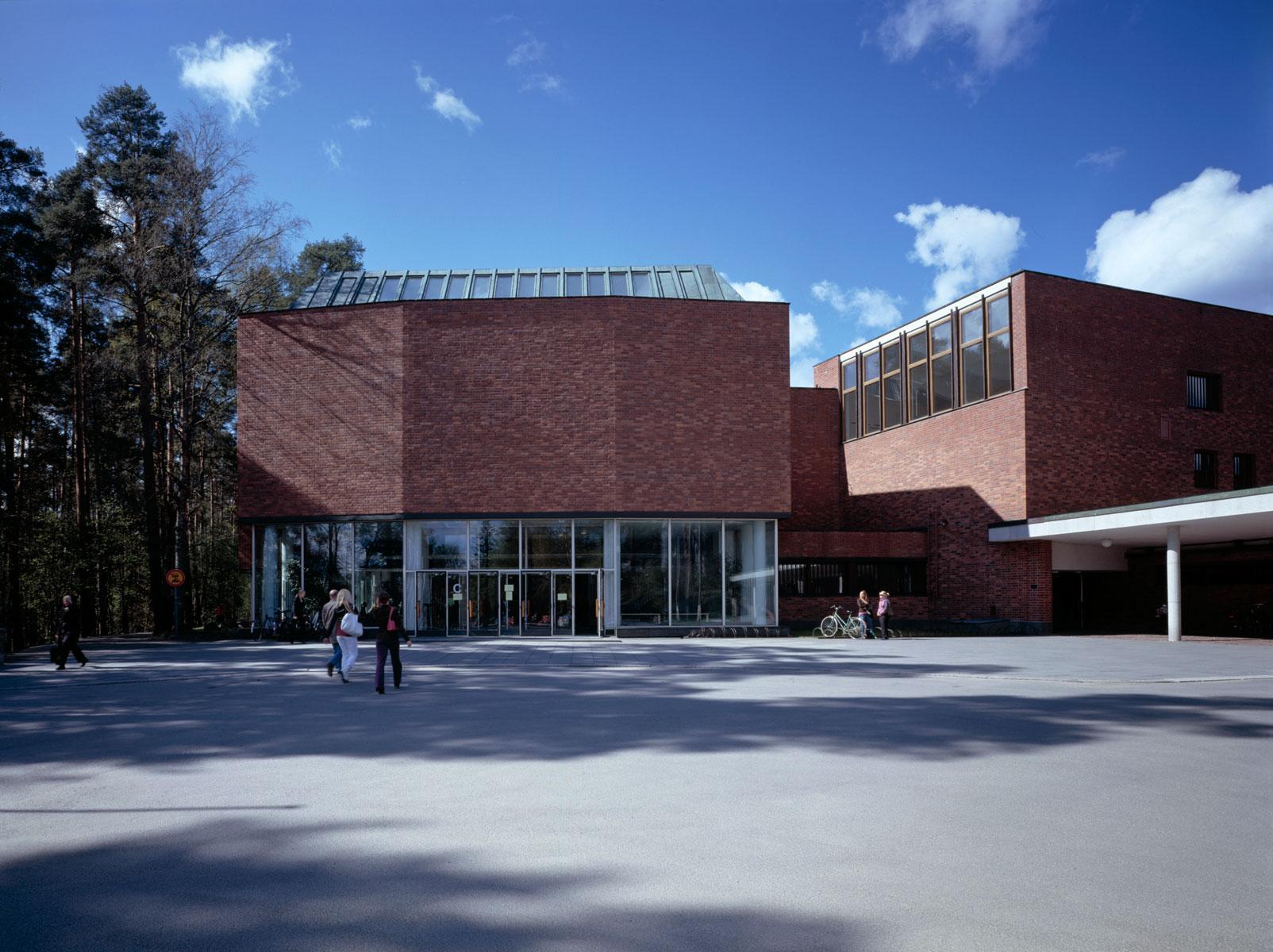
This experience is an intimate exploration of Aalto’s structural poetry: the University of Jyväskylä Campus, a testament to his genius. The serene Säynätsalo Town Hall. Then add the architectural allure of the Jyväskylä City Theatre, a stage for cultural narratives, and the spiritual resonance of Muurame Church.
Each visit isn’t to a site but to a story—a narrative shaped by Aalto’s dedication to innovation and elegance. Dive into the depths of architectural marvels and discover spaces that redefine the essence of form and function.
Discover Aalto’s diverse architectural phases in a three-day tour of the Jyväskylä region. From the early classicism to functionalism and from renowned Säynätsalo Town Hall’s architecture in brick to the Jyväskylä City Theatre’s monumentalism, this tour blends Aalto’s heritage with the Petäjävesi Old
Church’s heritage and the natural beauty of Lakeland, complemented by local hospitality.
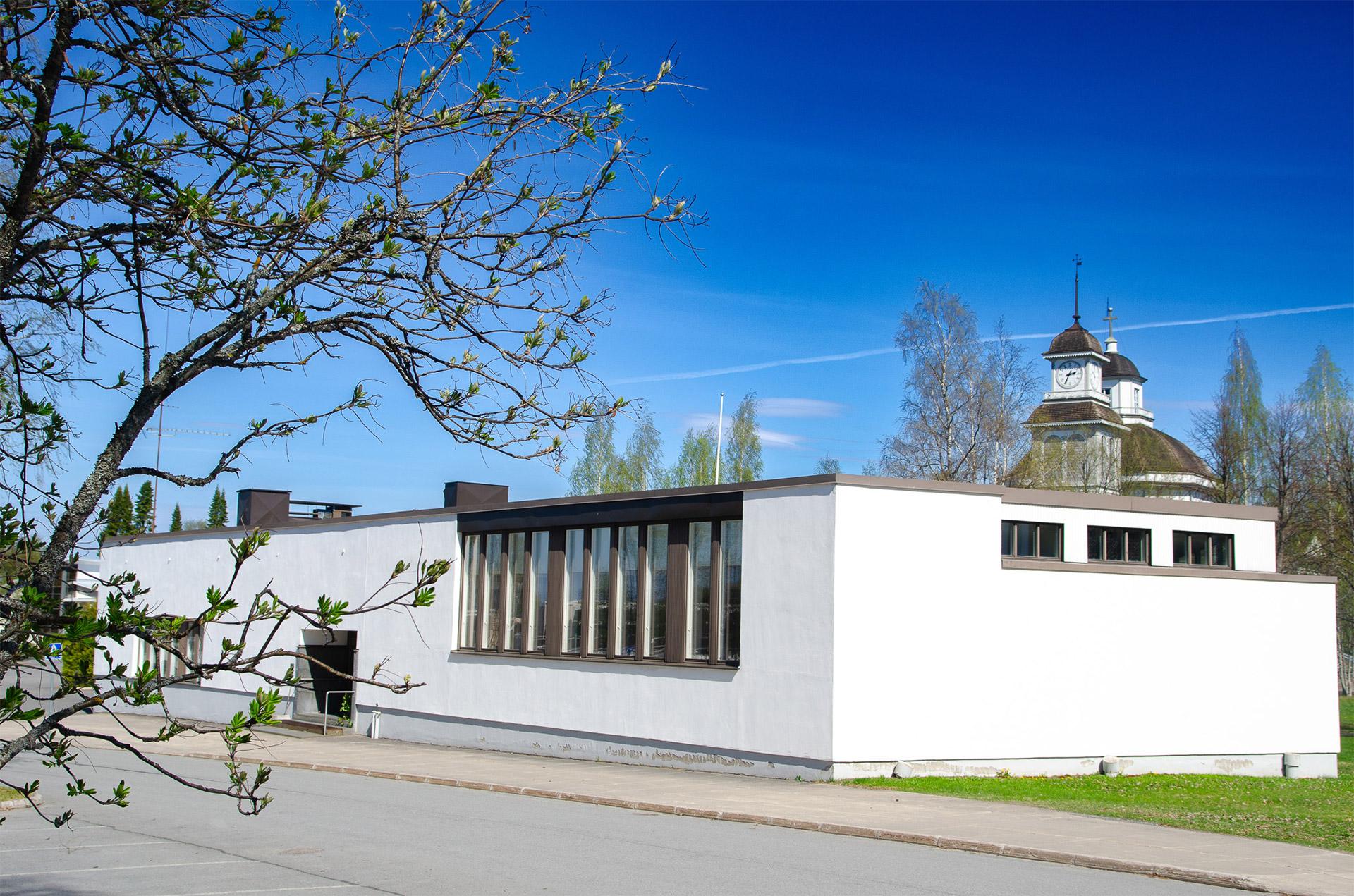
Construction of the parish hall began in 1969 and it was completed a year later. The Japanese-influenced parish hall features a lot of open, bright, and unified space. The parish hall’s minimalist white style echoes other buildings in the Aalto Center, such as the town hall and the library. The Aalto Center comprises several buildings by Aalto, all within a short walking distance from each other. Together, the buildings of the Aalto Center form a unique ensemble.
Inside the parish hall, there is a lot of open space. Aalto’s interest in Japanese culture and architecture is evident in the interior aesthetics of the parish hall. The minimalist appearance of both the interior and exterior of the parish hall contrasts with the Alajärvi Church, designed by Carl Ludwig Engel, located behind the building. Although the styles of the buildings are completely different, their color schemes are similar.
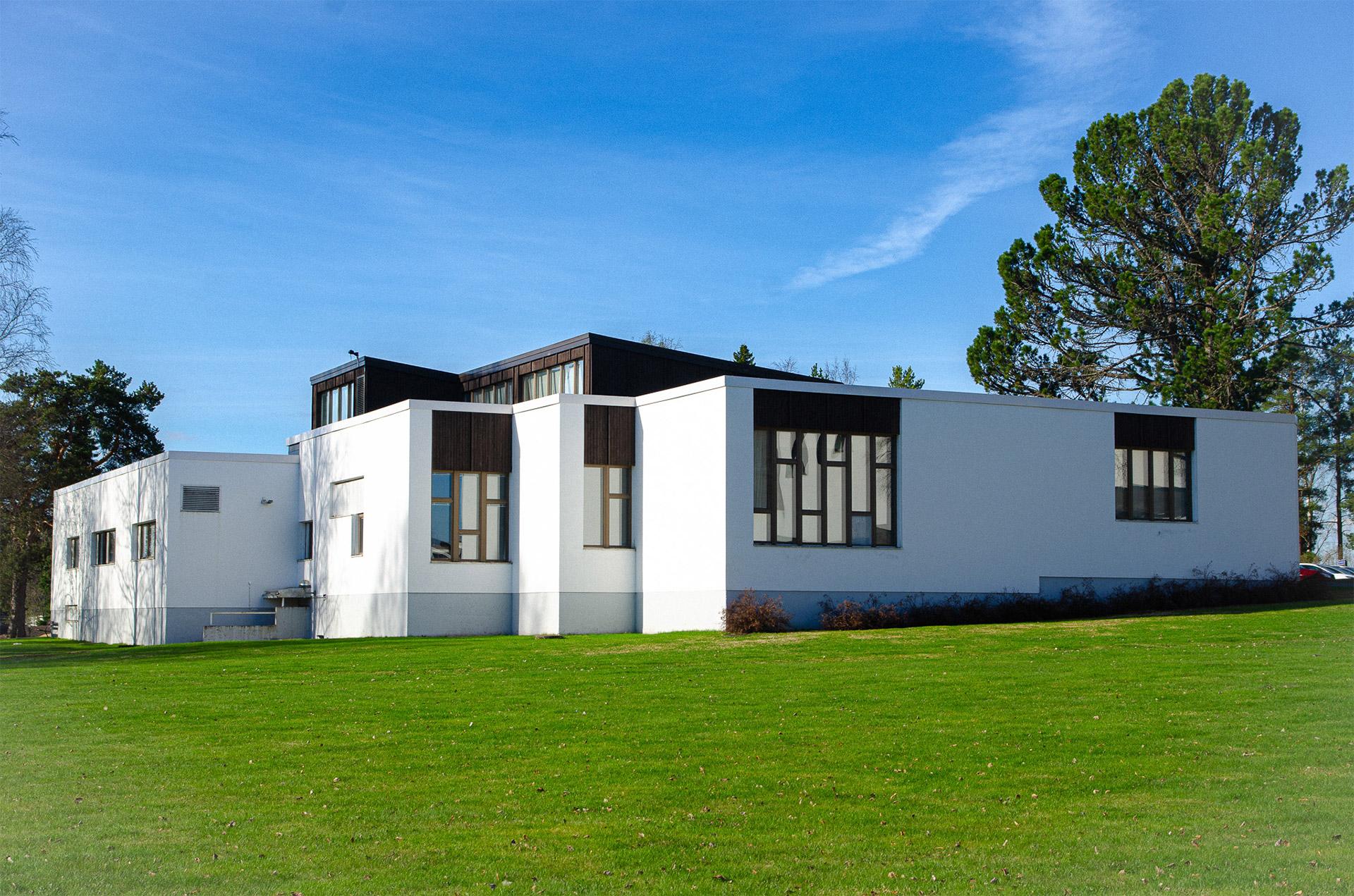
The Alajärvi City Library is the last design project by the architectural firm Aalto & Co. The library was completed in 1991, with Heikki Tarkka serving as the chief architect. Elissa Aalto, Alvar Aalto’s spouse, who finalized several of Alvar Aalto’s unfinished buildings, also participated in the design work. In 1966, Alvar Aalto created a plan for an administrative center in Alajärvi, and the library building’s design is based on his site plan and model.
The library’s minimalist white style echoes other buildings in the Alajärvi Aalto Center, such as the town hall and the parish hall. The Aalto Center comprises several buildings by Aalto, all within a short walking distance from each other. The most striking feature of the library’s design is the undulating wooden ceiling panel. The different shades of wood, the wavy lines, and the spaciousness of the library hall create an organic and nature-inspired impression of the building.
In addition to library operations, the building also hosts rotating art exhibitions.
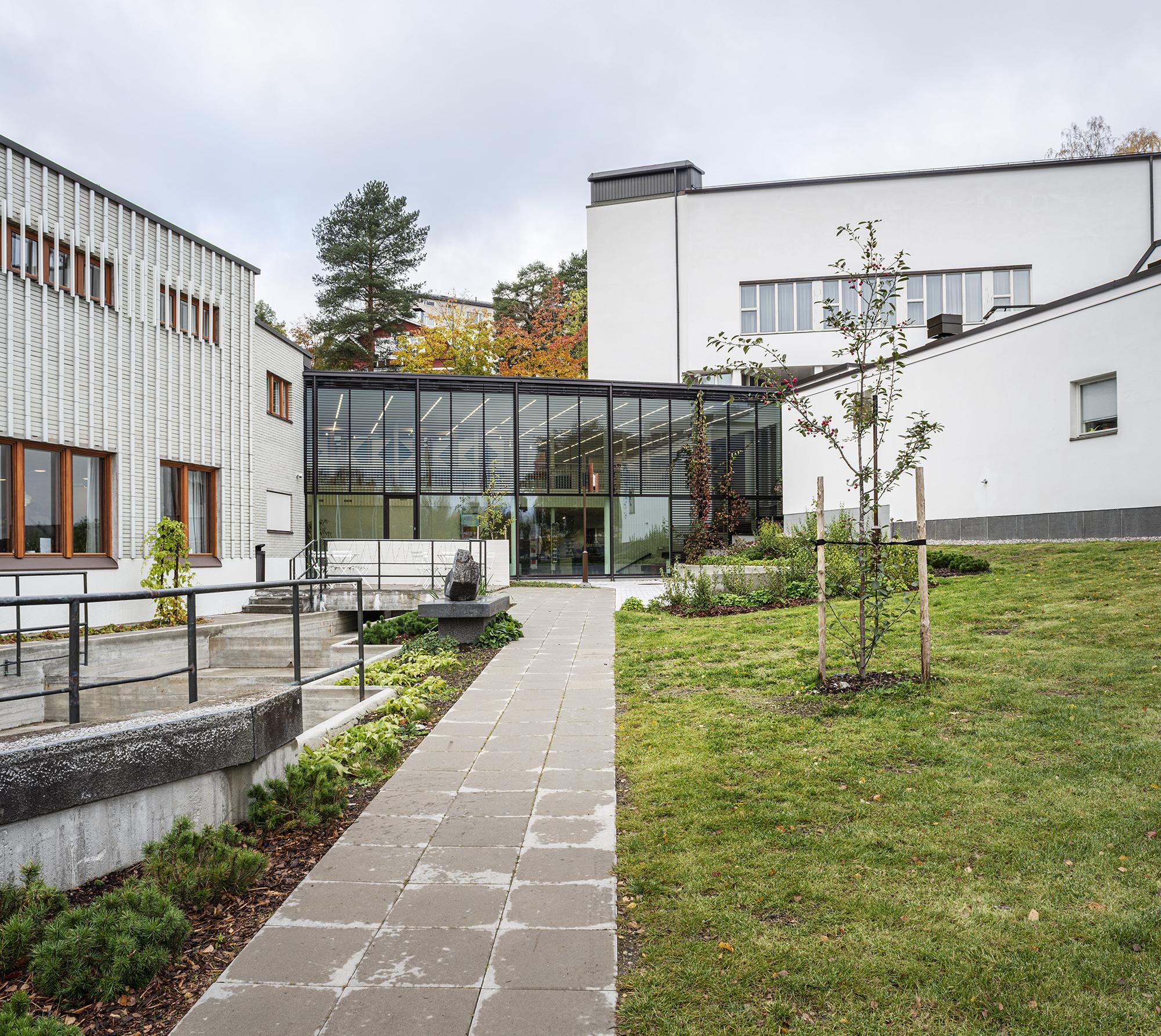
Aalto2 is a unique meeting place for architecture, design and cultural heritage in Jyväskylä in the heart of Central Finland. It combines two buildings designed by Alvar Aalto: the Museum of Central Finland and Alvar Aalto Museum. The Museum of Central Finland (1959–1961, 1991) focuses on the cultural history and heritage of Central Finland. The Alvar Aalto Museum (1971–73) belongs to the Alvar Aalto Foundation and is custodian of the material and intellectual legacy of the world-famous architect and designer. The museum buildings are connected by a new, light-filled section designed by A-Konsultit Architects. The new part (completed in 2023) houses the museums’ shared social area as well as the Aalto2 Shop and Café.
Aalto2 fulfils Alvar Aalto´s wish to create a forum that brings together a variety of artforms. The Aalto2 Museum Centre seamlessly combines architecture, design, cultural heritage, art and science. The Museum Centre puts on an interesting, multifaceted exhibition programme, as well as new events for different target groups. Find out more about the Aalto2 Museum Centre on our website. The Museum Centre’s multifunctional facilities are superbly suited to business meetings and evening events.
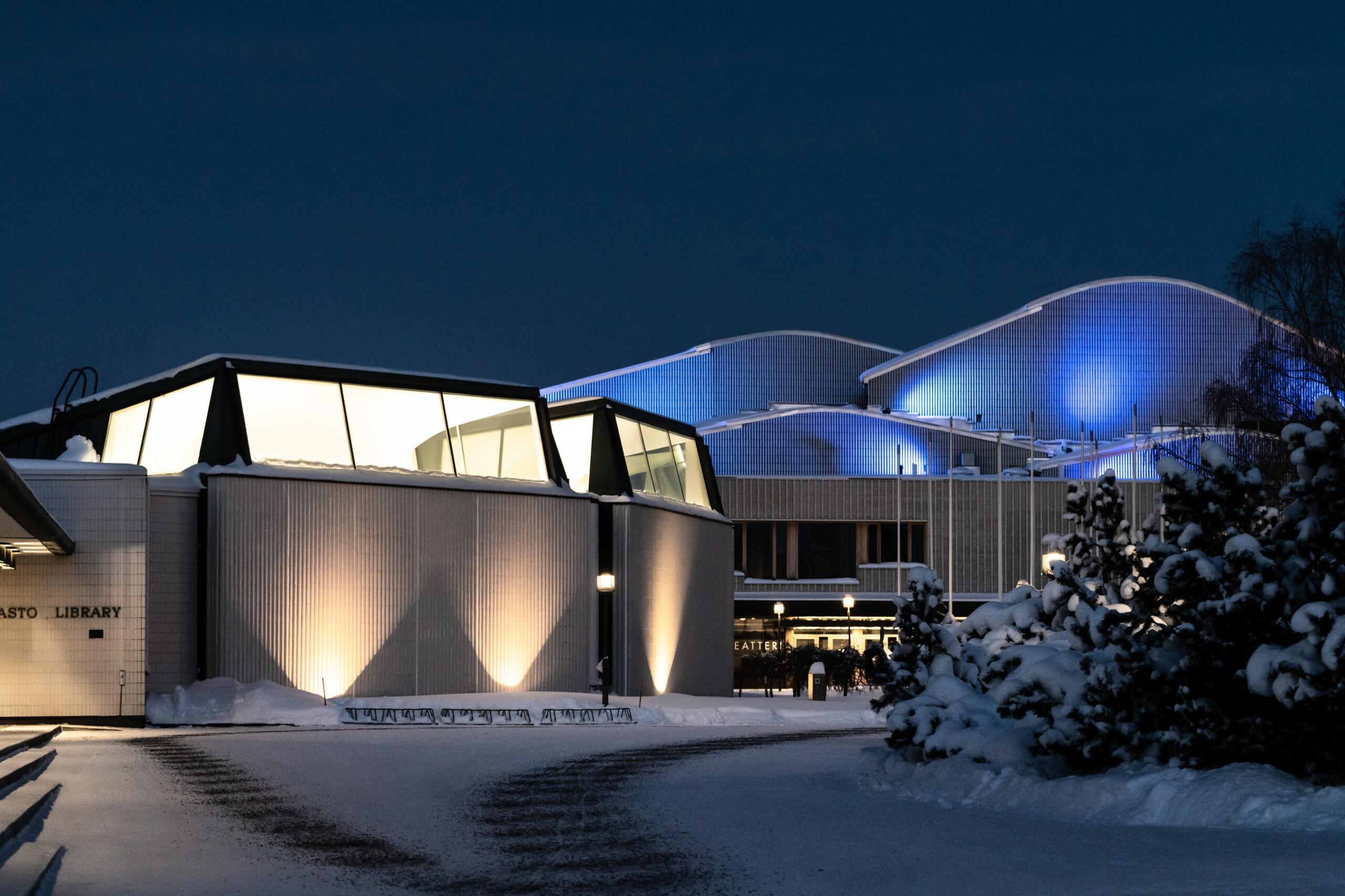
The Rovaniemi administrative and cultural center, Aalto center, is the only completed city center in Finland by Alvar Aalto, along with Seinäjoki.
The three buildings of the Aalto center – the library, Lappia Hall and the town hall – open like a fan shape towards the city center in a spacious park-like square. The library was the first to be completed in 1965. Lappia Hall was the last building that Alvar Aalto saw completed before his death. It was completed in two stages in 1972 and 1975. The design work of the town hall, completed in 1986, was led in Aalto’s office by his wife, architect Elissa Aalto.
The architectural highlights of the buildings are placed on the side of the square, where they form a spectacular entity. The upper windows of the library rise visibly from the rhythmically folded closed facade and bring natural light to the lending department. The upper parts of the stage halls of Lappia Hall rise like fells above the sleek facade line. In the town hall the council chamber has been formed like a crystalline tower, taller than the rest of the building.
In addition to the recognizable features of Aalto’s architecture, the buildings are bound together by the facade materials – light brick and ceramic tile. The materials for the interior of the buildings are well thought out, as are the furniture and lighting, which are partly from Artek’s collection, partly designed for the buildings by Aalto’s office.
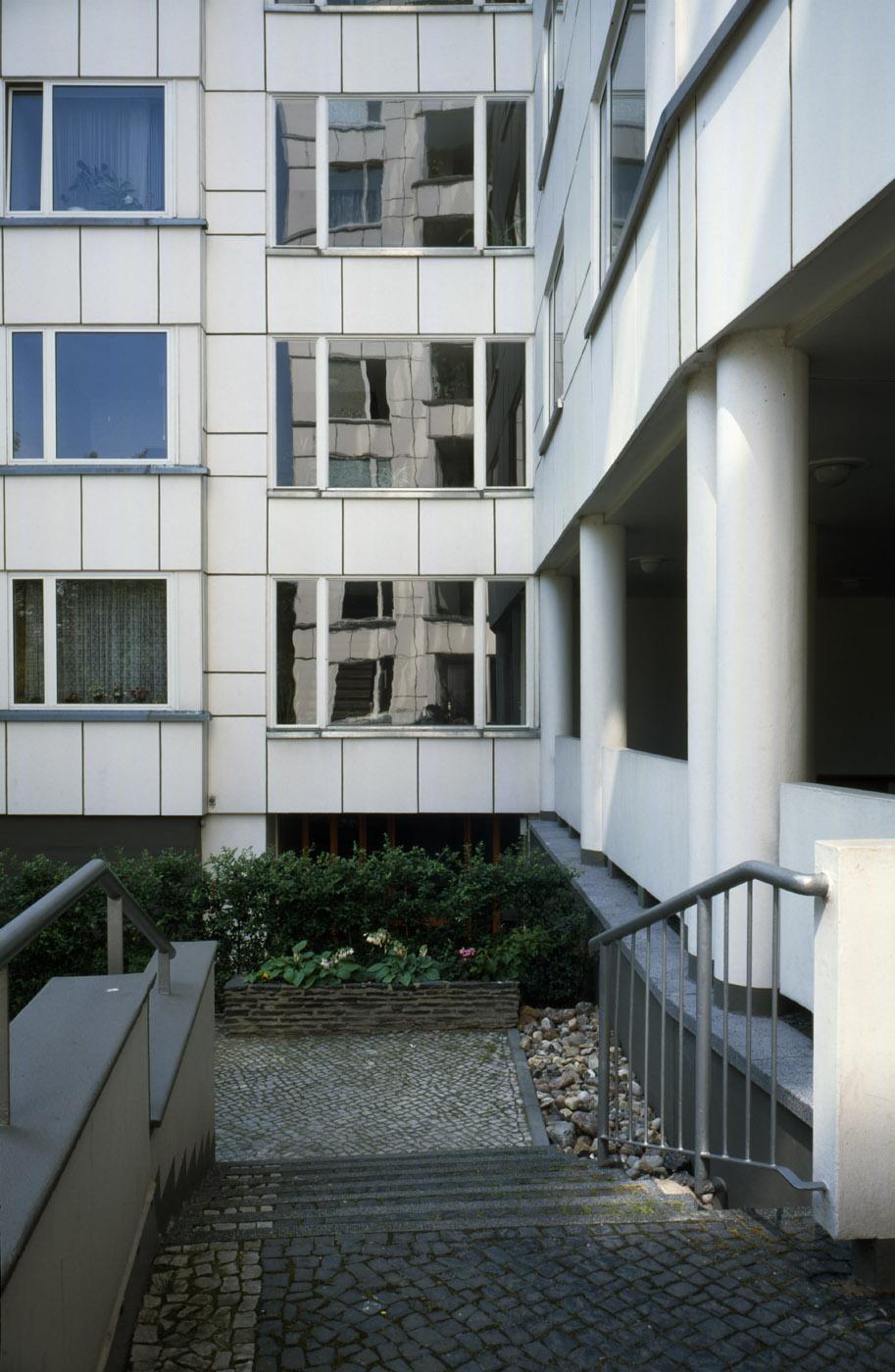
Take part on a three-day tour, where you get to spend two days in Berlin and one in Wolfsburg. On this tour you can admire and get to know the architecture, landscapes and sights accompanied by an exclusive English-speaking guide. During the tour, you will also get to experience a few interesting buildings that Alvar Aalto designed in Germany.
The tour begins by exploring Berlin, a city where there is definitely plenty to see and do. The first two days of the program provide an in-depth tour of the city’s interesting architecture and attractions. You will also get to enjoy the exciting atmosphere of the city and also do some shopping while you are at it. After taking over Berlin, the tour continues on a day trip towards the city of Wolfsburg, which has a lot to offer in particular for Aalto enthuastictics.
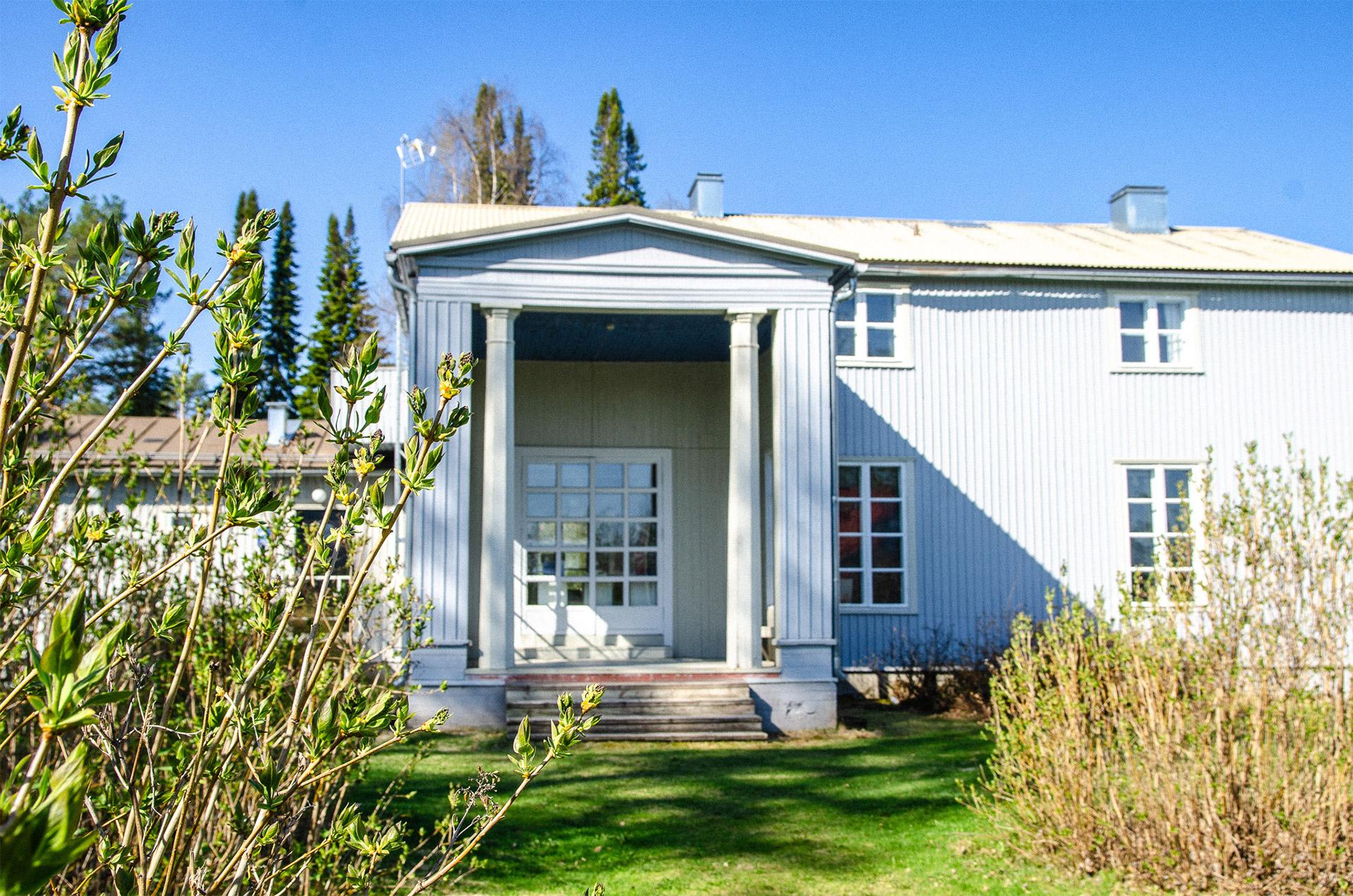
Nelimarkka Museum
The Nelimarkka Museum in Alajärvi was founded by the painter and professor Eero Nelimarkka (1891-1977) in 1964. The building was designed by his friend, the architect Hilding Ekelund. Since 1995 it has functioned as the Regional Art Museum of Southern Ostrobothnia. It focuses on displaying regional Ostrobothnian art, but art education also plays an important role in its activities.
Temporary exhibitions, workshops and events for visitors of all ages are organized regularly. Since the mid-1980s the museum has also run an international residency program for artists. In the summertime you can enjoy coffee and cake in the light atmosphere of the museum’s: “Café de Nelimarkka”. The museum shop is open year-round. You can book a customized tour or a workshop at the museum. The Nelimarkka museum maintains as well the nearby Villa Nelimarkka and Villa Väinölä, located in the centre of Alajärvi.
Villa Väinölä
Alvar Aalto designed Villa Väinölä as his brother’s home and office. It is said that Aalto drew the first version of the building after his honeymoon to Italy. Villa Väinölä’s original plan, sketched in 1925, was based on drawings made by Aalto of ancient roman atriums witnessed in Italy. However, the plan was found to be too expensive and visionary to implement, so Aalto simplified the design according to his brother’s wishes, and a more affordable version of the building was completed in 1926. Aalto also designed an outbuilding at the north end of the main building, which was completed in 1938.
Väinö Aalto and his family moved away from Alajärvi in the early 1950s, and in 1952, the municipality of Alajärvi bought Villa Väinölä. During the ownership of the municipality of Alajärvi, an additional wing was added to the southern end of the building, in order to function as a reception area for a doctor’s office that operated in the Villa at the time. Villa Väinölä has at one time hosted also a tax office, a dental office and leisure offices of the municipality of Alajärvi, as well as housing and building inspection offices. The ownership of the building was moved over to the Nelimarkka Museum in 2015.
The latest renovation of Villa Väinölä was completed in the spring of 2018, and it was financed with the help of the National Board of Antiquities, Aisapari and the City of Alajärvi. Exhibitions, events and architectural residencies are currently organised at Villa Väinölä. Through the Nelimarkka Museum, the building can also be booked for meetings and private parties.
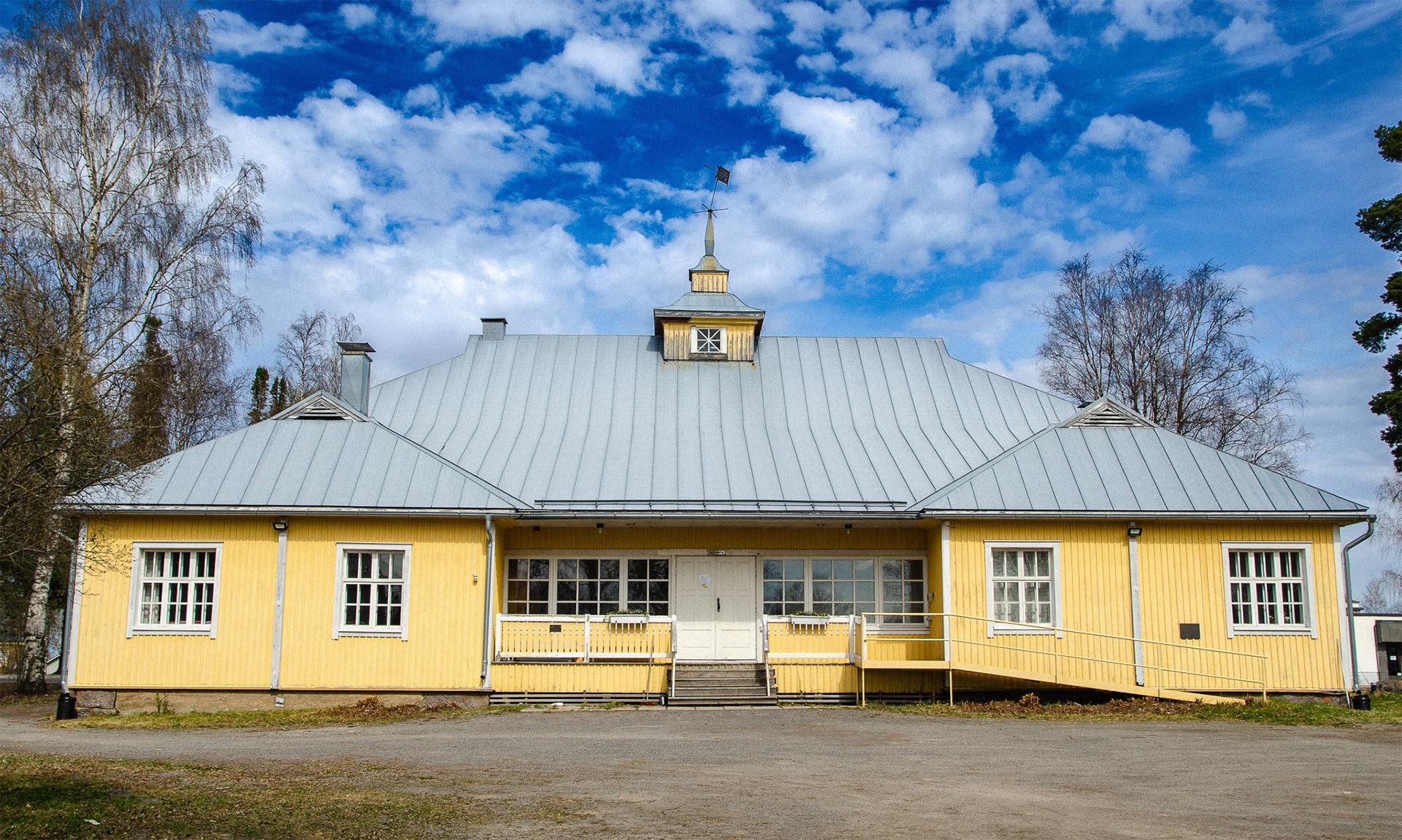
The Alajärvi Youth Association building from 1920 is one of the buildings designed by Alvar Aalto during his studies. It is also his first public building design. Construction work was carried out quickly, and the building is still in use nowadays. The current Youth Association building, that was formerly the Defence Corps building, was completed in 1920, and it was inaugurated on November 28. Until 1946, the building housed the local Defence Corps and Lotta Svärd departments. In 1946, the building was bought by the Youth Association club, that still owns it.
The log building is in Neoclassical style. The outer walls are covered in vertical wooden boards, and the open high roof gives the building a castle-like feel. Cross beams support the ceiling of the main hall; the elevation is so high that there is enough space for a theatre stage and an orchestra balcony. The building is topped by a Carolean lantern on the roof, which is reminiscent of the bell tower of a church. The two side wings originally embraced a small courtyard of honour, that has since been replaced by a built-in vestibule.
The Youth Association building is located along Sairaalatie street, close to the centre of Alajärvi. However, the building has been largely rebuilt due to a fire damaging it in 1983. The Youth Association building was restored to its original form during the renovation work, and the inauguration of the new house was held in 1985. The Alajärvi Youth Association Club maintains and renovates the building within the limitations of the received funding and grants.
The Alajärvi Youth Association Club also offers the possibility of renting the building. The premises of the Youth Association building provide a great setting for organising parties and other events such as weddings and birthdays, meetings and concerts. The premises are well suited for gatherings of about 30-100 people.
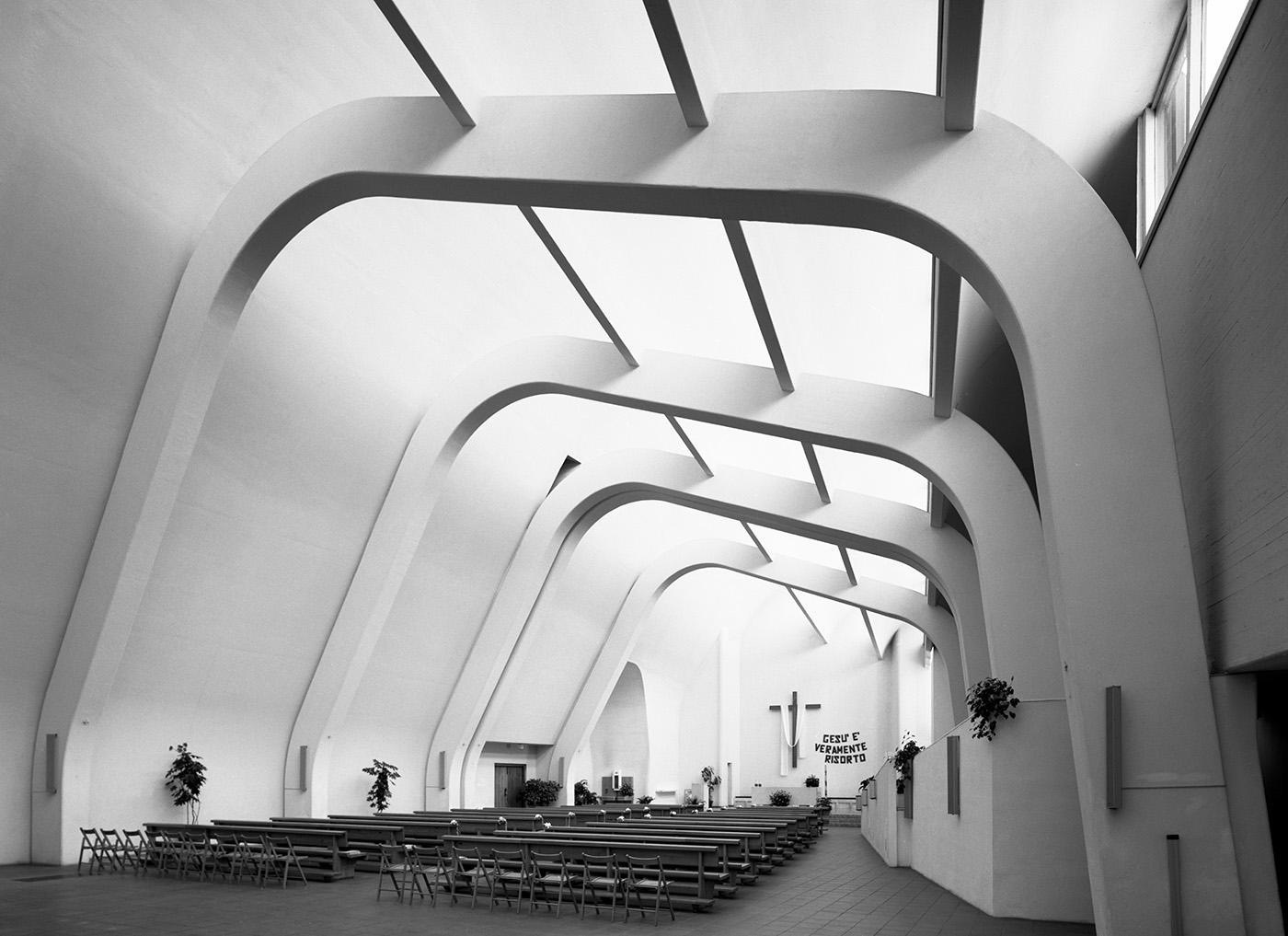
The small mountain village of Riola di Vergato lies on a slope of the Apennines some forty kilometres south of Bologna, along the road to Pistoia. The ecumenically inclined Bishop of Bologna, Cardinal Giacomo Lercaro, asked Aalto in 1965 to design a small church next to the old highway bridge across the river Reno. Aalto’s initial plan from 1966 already showed the church in its final form, but it was later supplemented by a wider plan including a retirement home and a kindergarten. Plans were then further developed in 1969 and again in 1975, continuing until 1980.
As Aalto had done in Seinäjoki, Aalto laid out an enclosed piazza in front of the church, in order to enable a large congregation of thousands to participate in divine services at major religious festivals. Aalto also thought that the church itself, which normally seats a congregation of 200, could be equipped with a gigantic sliding wall in order to divide it up, according to need, into a mini-church – comprising the altar, chancel, and baptistery – and a larger room for non-religious events. The church has an asymmetrical basilica disposition of a slightly wedge-like shape; the unusual roof system consists of a stepped vault whose fragments run longitudinally on one side, while the other side slopes towards the chancel. The surfaces of the fragmented vault are glazed, so that the whole church is bathed in sunlight reflected by them. The vault system is borne by seven gently curved, asymmetrical concrete arches that emerge from the ground on one of the long sides; they recall the shapes of Aalto’s famous wood furniture.
To the left of the chancel is the vestry, which forms part of the vicar’s apartment. The baptistery is on a somewhat lower level to the right of the chancel; it has a lantern visible from the outside and a window overlooking the river below. A campanile, consisting of five parallel vertical concrete planks, rises on the far side of the forecourt, providing an optical lift as a counterpart to the sloped roof of the church. The forecourt is walled off on one of its long sides, sheltered from the ravine of the river. The opposite side is lined by a colonnade and a modest parish building housing youth clubs, meeting rooms, etc.
Explore Alvar Aalto in Italy via WebApp by TERRITORI Narrative Italian Landscape.











